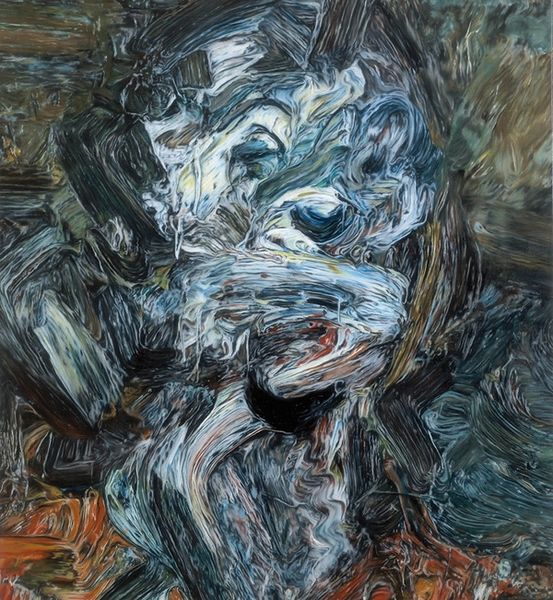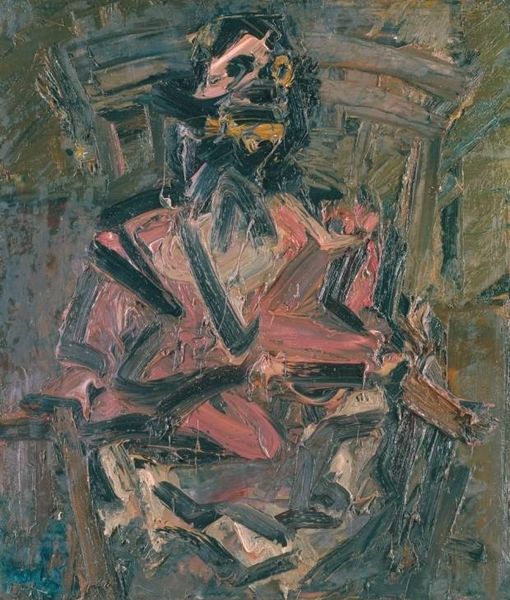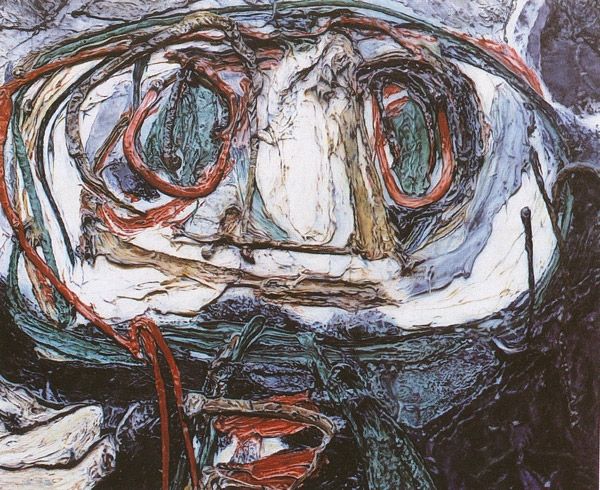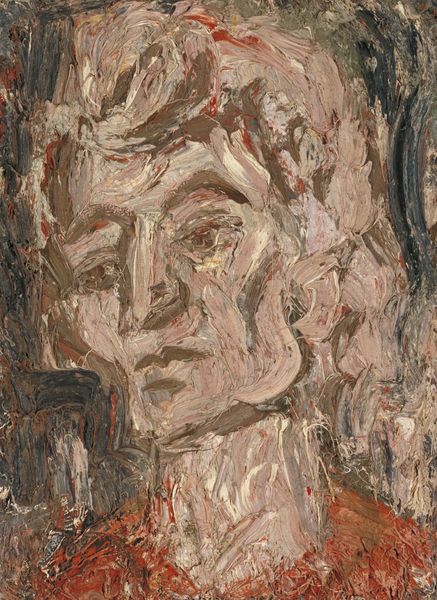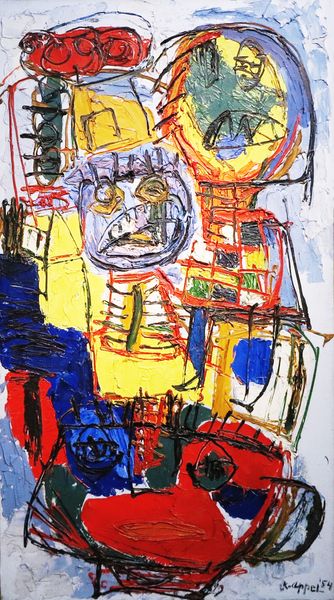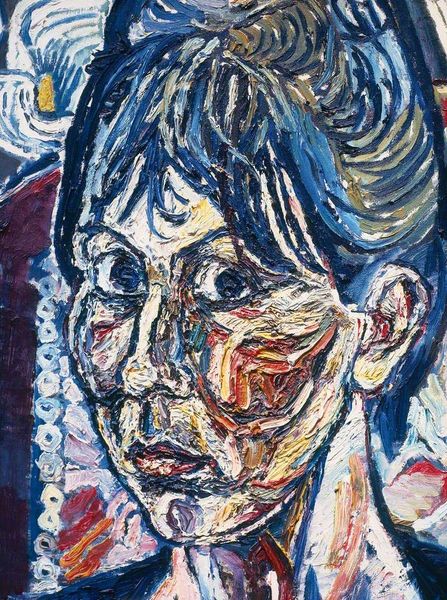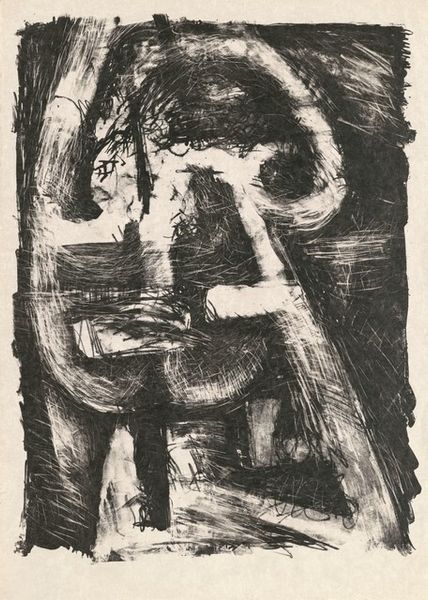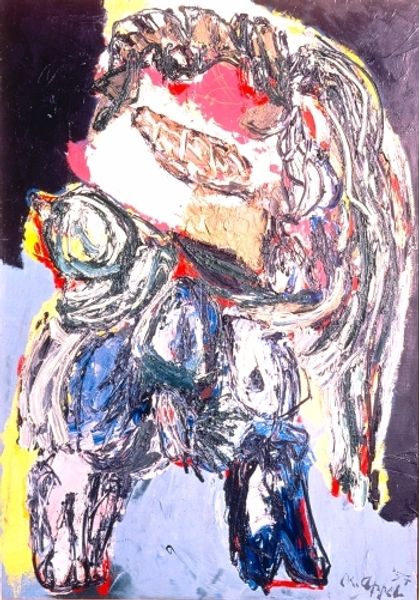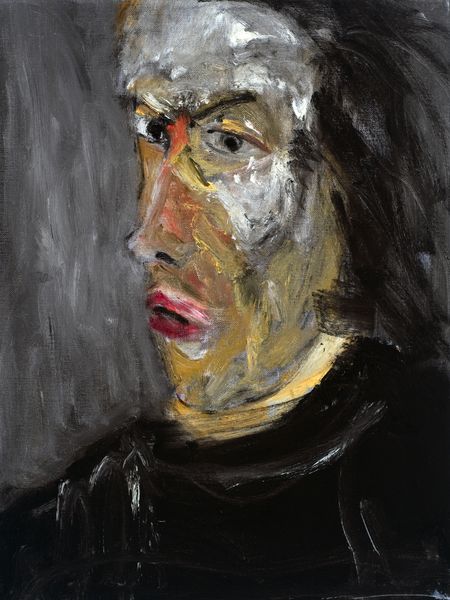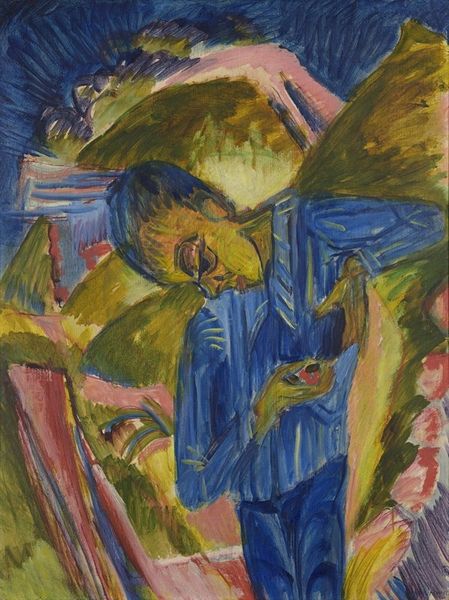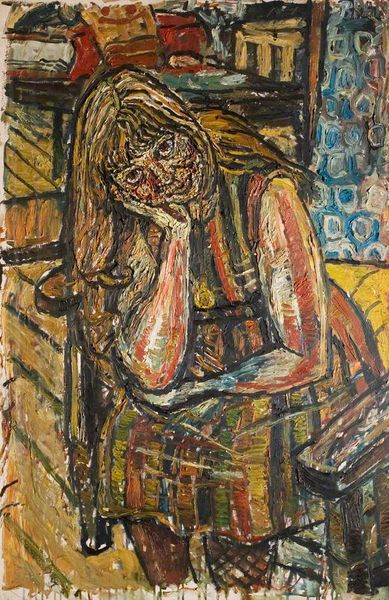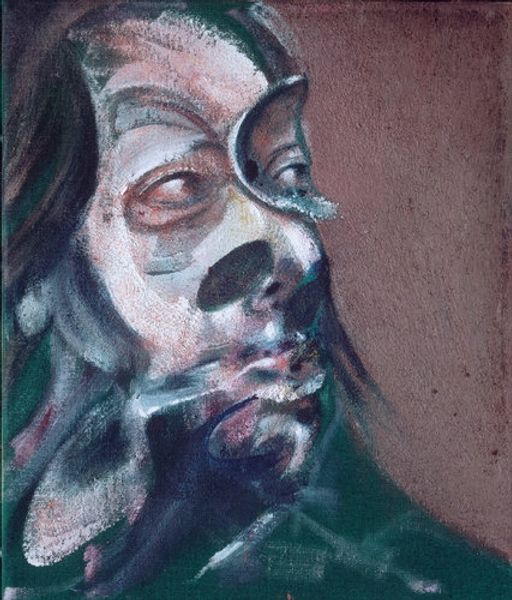
Copyright: Glenn Brown,Fair Use
Curator: Standing before us is Glenn Brown's "The Day The World Turned Auerbach," created in 1992. Brown, a British artist known for his appropriation and manipulation of existing artworks, gives us here a dense oil painting. Editor: My initial impression is…turbulent. A vortex of impasto. There’s a figure emerging, but almost fighting its way out of the chaos. I feel a deep unease. Curator: Indeed, Brown is in conversation here with the legacy of Frank Auerbach and more generally Neo-Expressionism. Notice the intensely worked surface, characteristic of matter-painting. The layering and swirling texture recall Auerbach’s signature style, which itself was influenced by artists working post-World War II. Editor: The 'day the world turned' certainly feels cataclysmic, a post-war emotional landscape rendered through thick, almost sculptural strokes. I’m interested in the gendered implications, the near erasure of a form suggesting how trauma disproportionately affects certain identities. And this red. There is so much repressed anger in that thick scarlet paint. Curator: The socio-political contexts of Neo-Expressionism in the late 20th century cannot be dismissed either. The aggressive brushstrokes are often interpreted as reactions to socio-political instability. Brown subtly plays with this heritage, his manipulation adds another layer of meaning. Is this about deconstruction or reaffirmation of historical canons? Editor: I think it's a destabilizing of established narratives. Is he dismantling patriarchal constructs, perhaps, by literally taking apart Auerbach's style and showing the seams? Brown invites us to critically look at how artists, movements, and institutions perpetuate historical tropes. Curator: Absolutely. Glenn Brown urges us to rethink the historical construction of artistic expression itself and its link to public consciousness. Editor: This piece makes me question whose trauma, and which era’s turmoil, gets monumentalized and how the dominant style influences historical narratives. Curator: Indeed. The painting opens space for reinterpretation.
Comments
No comments
Be the first to comment and join the conversation on the ultimate creative platform.
